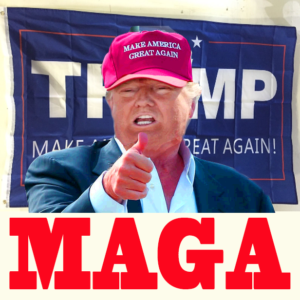MAGA: US losing race to 5G
While Trump is fighting 19th century trade wars and pushing repairs to our rotting 1950s infrastructure, the rest of the world is pushing forward, led by China.

How it works: 5G networks require a combination of low-, mid- and high-frequency airwaves to provide faster

data speeds with lower lag time. A big infrastructure upgrade is needed: Networks will need a lot of new radio frequencies (allocated by governments) that will be transmitted by hundreds of thousands of new small antennas. It is these radio frequencies in particular that are causing uproar amongst some groups of people, with many concerned about the
effects of 5G on the body. However, the aforemetioned economic advantage 5G will bring is enough to keep these countries pushing ahead with their plans to introduce it.
How the countries stack up: China is in the lead, followed by South Korea, the U.S. and Japan. Germany, the U.K. and France are in the second tier of countries in terms of readiness.
 China: Its 5-year plan aims for broad commercial 5G launch by 2020, and all the major wireless providers (like Huawei and ZTE) have conducted extensive 5G trials. The government has aggressively opened up significant amounts of mid- and high-band spectrum. Data from CCS Insight suggests the large Chinese market is expected to be the biggest for 5G by 2022, CNBC reported.
China: Its 5-year plan aims for broad commercial 5G launch by 2020, and all the major wireless providers (like Huawei and ZTE) have conducted extensive 5G trials. The government has aggressively opened up significant amounts of mid- and high-band spectrum. Data from CCS Insight suggests the large Chinese market is expected to be the biggest for 5G by 2022, CNBC reported.- South Korea: This year’s Winter Olympics provided a focal point for early investment and trials by the wireless companies. The government has freed up large swaths of airwaves.
- U.S.: All major wireless companies have started trials of 5G technologies and equipment, with many commercial launches planned by the end of this year. The FCC is holding a high-band spectrum auction in November, but there’s not a clear pipeline for mid-band spectrum. 16 states have enacted small cell legislation.
- Japan: Wireless companies are focused on widespread deployment ahead of the 2020 Olympics. The government adopted a 5G roadmap in 2016 and committed to releasing more spectrum by early next year.
Moving fast: The global competition is propelling 5G development much faster than was originally expected, with carriers and some cities moving quickly to install infrastructure, said CTIA president and CEO Meredith Attwell Baker, a former FCC commissioner.
Winners: Europe won the 2G race and Japan led the 3G race. The U.S. led in 4G, resulting in $100 billion in GDP by 2016, CTIA said.
- “We won the race to 4G and that meant that the semiconductor, operating systems and app industries were all here,” she said. “All those benefits to the economy are going to be even greater in 5G but we have to make sure we don’t export it.”
China threat: The Trump administration is well aware of the threat of China.
- Last month, it blocked Broadcom’s proposed buyout of Qualcomm on national security grounds. There were also fears that Broadcom’s business practices would weaken Qualcomm’s and the U.S.’s 5G position – allowing China’s Huawei a bigger advantage.
- The administration also briefly toyed with the idea of nationalizing part of the U.S. wireless airwaves in an attempt to thwart Chinese advances.
Tags: China, Tech
Posted 16 Apr 2018 by theaveeditor
in Donald Trump
 data speeds with lower lag time. A big infrastructure upgrade is needed: Networks will need a lot of new radio frequencies (allocated by governments) that will be transmitted by hundreds of thousands of new small antennas. It is these radio frequencies in particular that are causing uproar amongst some groups of people, with many concerned about the effects of 5G on the body. However, the aforemetioned economic advantage 5G will bring is enough to keep these countries pushing ahead with their plans to introduce it.
data speeds with lower lag time. A big infrastructure upgrade is needed: Networks will need a lot of new radio frequencies (allocated by governments) that will be transmitted by hundreds of thousands of new small antennas. It is these radio frequencies in particular that are causing uproar amongst some groups of people, with many concerned about the effects of 5G on the body. However, the aforemetioned economic advantage 5G will bring is enough to keep these countries pushing ahead with their plans to introduce it. data speeds with lower lag time. A big infrastructure upgrade is needed: Networks will need a lot of new radio frequencies (allocated by governments) that will be transmitted by hundreds of thousands of new small antennas. It is these radio frequencies in particular that are causing uproar amongst some groups of people, with many concerned about the effects of 5G on the body. However, the aforemetioned economic advantage 5G will bring is enough to keep these countries pushing ahead with their plans to introduce it.
data speeds with lower lag time. A big infrastructure upgrade is needed: Networks will need a lot of new radio frequencies (allocated by governments) that will be transmitted by hundreds of thousands of new small antennas. It is these radio frequencies in particular that are causing uproar amongst some groups of people, with many concerned about the effects of 5G on the body. However, the aforemetioned economic advantage 5G will bring is enough to keep these countries pushing ahead with their plans to introduce it.
 China: Its 5-year plan aims for broad commercial 5G launch by 2020, and all the major wireless providers (like Huawei and ZTE) have conducted extensive 5G trials. The government has aggressively opened up significant amounts of mid- and high-band spectrum. Data from CCS Insight suggests the large Chinese market is expected to be the biggest for 5G by 2022,
China: Its 5-year plan aims for broad commercial 5G launch by 2020, and all the major wireless providers (like Huawei and ZTE) have conducted extensive 5G trials. The government has aggressively opened up significant amounts of mid- and high-band spectrum. Data from CCS Insight suggests the large Chinese market is expected to be the biggest for 5G by 2022,